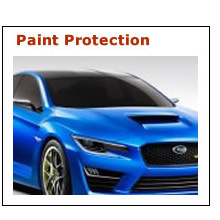We have a number of topics to pick from below. Let’s get discussing and exchanging ideas.
Category: DIY Window Tint
Paint Protection
Let’s talk about paint protection for your car, truck or SUV. Comments are appreciated.
Shop Management
Let’s talk about managing a window tinting shop. Comments are appreciated.
General Discussion
Let’s talk about window tinting or anything that comes to mind. Comments are appreciated.
Window Tinting Tools
Let’s discuss the best window tinting tools that are available. Your comments appreciated
DIY Window Tinting
What is the difference between water-activated and pressure-sensitive adhesive?
Window tinting films come with the adhesives already on them. There is a clear protective liner which must be removed and discarded before installation of the material. Water-activated adhesives are dry to the touch when the protective liner is removed, not tacky or sticky. To activate the adhesive, you must get it wet with a solution of soapy water. This allows you to position and handle the film easily in the installation process. Most of the residential and commercial films use water-activated adhesives. Pressure-sensitive adhesive is sticky to the touch when you remove the clear liner. Like the dry adhesive, however, you must still get it wet with mounting solution prior to installation.
How difficult is it to install film myself?
If you follow the instructions, installing window tint is very easy for do-it-yourselfers. There are some great videos available along with downloadable pdf files for learning how to tint from a number of resources on the internet. You can watch a short video about window tinting that is available from WindowTint.com. They also have some downloadable PDF instructions that can help you do the job right the first time.
What tools will I need to install my tint kit?
You will need a spray bottle for your mounting solution and a razor blade and scrubbing pad for the preparation of the glass. You will need a squeegee, hard card, and knife for the installation of your tint. You will need a small amount of liquid (Joy) dish soap, and water to make your cleaning and mounting solution. For step-by-step instructions go here Do-It-Yourself Instructions…
Some films say that they are “not recommended for dual-pane windows”. What does this mean?
Most all residential and commercial films are tested and rated “dual pane safe”. Automotive films are not dual-pane safe, and should not be used on dual-pane windows. Dual-pane windows are the type that have two pieces of glass with a spacer between them at the perimeter of the glass. You can tell by looking at the edge of the glass for the spacer, it is usually made of shiny aluminum. If you are not sure, check with the manufacturer of the windows.
What is VLT?
This stands for visible light transmission. This means that after the film has been applied to your windows, the VLT percentage is the amount of light that the film will allow to transmit through the glass. The lower the VLT, the darker the film and the less light it transmits.
Is there a one-way mirror tint?
There are films that are highly reflective on the outside, yet less so on the inside to reduce glare. They work just like a pair of mirrored sunglasses, which means that for the most part, during the day, anyone looking in the window will see their own reflection instead of seeing through the window. There are no films, however, that can completely block people from seeing through a window when the light inside is greater than the light outside. So at night, people will be able to see in, even if the visible light transmission is very low.
What is the darkest shade of film I can use on my car windows?
You can use as dark a film as your local or state law allows. We recommend that you click on our State Law Chart, to find out the legal limits in your area. If you have poor night vision, we recommend that you choose a medium or light film to see out easier at night…
Why don’t they offer automotive kits for vans or RVs?
Some kits for vans. Do to the highly customized nature of most vans or RVs, the window patterns are often too complex to include in a pre cut window film. You should contact the company you are going to buy the film from and get an estimate for the cost of pre-cutting these films.
Is it cheaper to buy film by the roll or in a pre-cut kit?
If you have many windows that you wish to tint, it will save you money if you buy the window film by the roll. If you have only a few windows, we recommend a pre-cut-window-film kit. Tint by the roll comes in widths of 3 feet, 4 feet, 5 feet and, in some cases 6 feet, and these films are sold in lengths from 10 feet to 100 feet.
Why are there separate films for residential and automotive? Aren’t all window tinting films the same?
There are two main factors which separate residential films from automotive films. The first is adhesive. Most residential films have a water-activated adhesive, which means it is not sticky to the touch, and you use the mounting solution to activate it during installation. The automotive adhesive is sticky to the touch, making it more aggressive for automotive applications. The second factor is the functionality and construction of the product. All auto or residential window films are constructed for optimal performance for what they are intended to be used for. We do not recommend that you mix and match films (i.e., automotive film on residential or vice versa).
How long does it take for the film to dry?
Cold weather and humid conditions can lengthen the dry-out time, while warm, sunny weather will speed it up. Dry-out times can vary from a few days to as long as six months, but the film will eventually dry completely. Moisture that is trapped during the installation process can cause bubbles or a slightly cloudy appearance. This is normal. Do not try to pierce or cut the film in an attempt to drain the trapped moisture. This will damage the film. Just be patient and allow the film to dry completely on its own.
How soon can I clean my windows after installing window tinting films?
Do not clean the film for 30 days following installation. This allows the film to adhere securely to the window. When you do clean your windows, make sure to use mild cleaning solution and fresh, clean, soft cloth. To avoid scratching the film, do not use abrasive cleaning materials, bristle brushes, or cloth that contains dirt particles. Even some paper towels are rough enough to scratch your film, causing a dull finish over time.
How will window tinting affect my plants?
Window Tinting will reduce the amount of light available to your plants, so variegated or light-green plants should be considered when choosing your tint shade. Most tropical plants require less light and heat than clear windows provide, and may even benefit from the added sun protection of a window film. Less light, however, will slow their growth. Some plants may go into shock while adjusting to the new lighting conditions. If this continues for longer than a week, we recommend that you move the plant to a location where it will receive more light.
Will window tinting films keep my furniture from fading?
Window tinting films will not completely eliminate fading, but installing it is one of the best things you can do to block the factors that cause it. Window film blocks 99% of UV rays, which are responsible for about 40% of the fading equation. Heat makes up about 25%, visible light about 25%, and miscellaneous factors bring home the final 10%. Short of keeping your home furnishings in darkness, window film is your best defense against fading.
Tint Industry – Window Tinting Made Easy!
Window tinting can be fun, easy and affordable when you have the right window tint film, the right tools and complete instructions on how to do it. Our goal at Tint Industry is to provide you with all the information and resources necessary to find the best window tint film and information available for your home, car, or office tinting projects.
We offer everything from articles on how to DIY (Do It Yourself) and even recommendations on where to purchase window tint films, tools, and information videos on how to install your window tint film for a professional look. So whether you’re a seasoned window tinting professional or just getting started, Tint Industry has all the resources you need to help you get the job done right the first time. Click any of the categories above to start reading articles about all things window tint!







